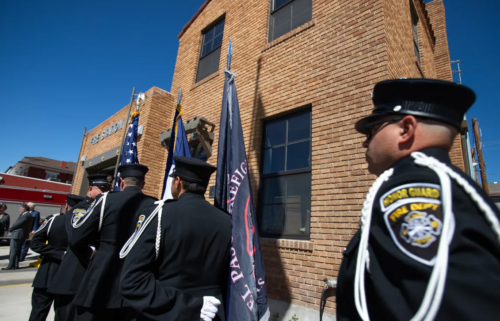Ancient case of disease spillover discovered in Neanderthal man who got sick butchering raw meat

The skull of a Neanderthal man known as the "Old Man of La Chapelle." Unearthed in 1908
By Katie Hunt, CNN
Scientists studying ancient disease have uncovered one of the earliest examples of spillover — when a disease jumps from an animal to a human — and it happened to a Neanderthal man who likely got sick butchering or cooking raw meat.
Researchers were reexamining the fossilized bones of a Neanderthal who was found in a cave near the French village of La Chapelle-aux-Saints in 1908. The “Old Man of La Chapelle,” as he became known, was the first relatively complete Neanderthal skeleton to be unearthed and is one of the best studied.
More than a century after his discovery, his bones are still yielding new information about the lives of Neanderthals, the heavily built Stone Age hominins that lived in Europe and parts of Asia before disappearing about 40,000 years ago.
The man, thought to be in his late 50s or 60s when he died about 50,000 years ago, had advanced osteoarthritis in his spinal column and hip joint, a study from 2019 had confirmed.
However, during that reanalysis, Dr. Martin Haeusler — a specialist in internal medicine and head of the University of Zurich’s Evolutionary Morphology and Adaptation Group at the Institute of Evolutionary Medicine — realized that not all the changes in the bones could be explained by the wear and tear of osteoarthritis.
“Rather, we found that some of these pathological changes must be due to inflammatory processes,” he said.
“A comparison of the entire pattern of the pathological changes found in the La Chapelle-aux-Saints skeleton with many different diseases led us then to the diagnosis of brucellosis.”
The study with those findings was published in the journal Scientific Reports last month.
Zoonotic disease
Brucellosis is a disease that’s still widespread today. Humans generally acquire the disease through direct contact with infected animals, by eating or drinking contaminated animal products, or by inhaling airborne agents, according to the World Health Organization. Most cases are caused by unpasteurized milk or cheese from infected goats or sheep.
It’s also one of the most common zoonotic diseases — illnesses that are transmitted from animals to humans. They include viruses like HIV and the coronavirus that caused the Covid-19 pandemic.
Brucella has a wide range of symptoms, including fever, muscular pain and night sweats, Haeusler said. It can last from a few weeks to many months or even years. Long-term problems resulting from the disease are variable but can include arthritis pain, back pain, inflammation of the testes — which can lead to infertility — and inflammation of the heart valves known as endocarditis, which Haeusler said was the most common cause of death from the disease.
The paper said the case was “the earliest secure evidence of this zoonotic disease in hominin evolution.”
The disease has also been found in Bronze Age Homo sapiens skeletons, which date back to around 5,000 years ago.
Diet
Brucellosis is found in many wild animals today, and Haeusler said that the Neanderthal man likely caught the disease from butchering or cooking an animal that had been hunted as prey. Possible sources include wild sheep, goats, wild cattle, bison, reindeer, hares and marmots — all of which were components of the Neanderthal diet. However, the paper said that the two large animals Neanderthals hunted, mammoths and woolly rhinoceros, were unlikely to be the disease reservoir — at least based on the animals’ living relatives, in which brucellosis has been largely undetected.
Given the man lived to what must have been a very old age for the period, Haeusler suspected that the Neanderthal may have had a milder version of the disease.
The “Old Man of Chapelle” played a significant role in misconceptions about Neanderthals being primitive Stone Age brutes, according to the Smithsonian. More recent research suggests that they were just as smart as we are.
An early reconstruction of the skeleton depicted the man with a slouching posture, bent knees and the head jutted forward. It was only later that scientists realized the skeleton had a deforming kind of osteoarthritis and perhaps was not a typical Neanderthal.
Haeusler said the study he published in 2019 showed that, even with the wear and tear from degenerative osteoarthritis, the “Old Man of Chapelle” would have walked upright. The man also had lost most of his teeth and may have had to have been fed by other members of his group.
The-CNN-Wire
™ & © 2021 Cable News Network, Inc., a WarnerMedia Company. All rights reserved.




